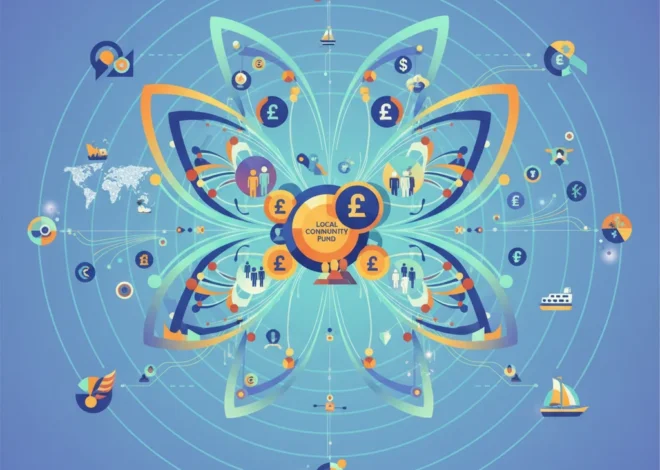
Navigating the Upside Down: Investment Lessons from Stranger Things’ Final Season
The Closing Bell on Hawkins: What a TV Phenomenon Teaches Us About Economic Uncertainty
After nearly a decade of 1980s nostalgia, supernatural horror, and heartfelt friendships, Netflix’s global sensation, Stranger Things, is preparing for its final act. As the first part of its fifth and final season approaches, the show represents more than just a cultural touchstone; it’s a multi-billion dollar asset for Netflix and a masterclass in building a dedicated global audience. However, beyond the Demogorgons and the Upside Down, the series offers a surprisingly potent allegory for the high-stakes, often terrifying, world of modern finance, investing, and economics.
The fictional town of Hawkins, Indiana, is perpetually on the brink of disaster, facing existential threats from an alternate dimension that few understand and even fewer can control. This narrative mirrors the experience of today’s investors and business leaders who navigate a global economy rocked by unforeseen shocks—from pandemics and geopolitical conflicts to the disruptive force of new financial technology. As we brace for the show’s conclusion, let’s explore the critical lessons Hawkins can teach us about surviving and thriving in our own economic “Upside Down.”
The Vecna of Volatility: Understanding and Confronting Market Shocks
In Stranger Things, the primary threat is often an invisible force that exploits fear and uncertainty, much like market volatility preys on investor sentiment. The sudden appearance of the Upside Down in season one was a classic “black swan” event—an unpredictable occurrence with extreme consequences that, in hindsight, seems obvious. The global financial crisis of 2008, the dot-com bubble burst, and the 2020 COVID-19 market crash were all real-world equivalents, fundamentally altering the landscape of the economy and the stock market.
The residents of Hawkins initially react with disbelief and panic, a reflection of investor behavior during a market downturn. The ensuing chaos leads to irrational decisions, driven by fear rather than strategy. This is a powerful reminder of the importance of maintaining a disciplined approach to investing. While the S&P 500 has experienced numerous downturns, its long-term trajectory has consistently been upward. According to data from Hartford Funds, staying invested during volatile periods has historically yielded far better results than attempting to time the market. The key is not to avoid the Upside Down entirely—an impossible task—but to build a portfolio resilient enough to withstand its incursions.
This resilience is built on a foundation of solid research and an understanding of macroeconomic principles. The field of economics provides the tools to analyze the forces shaping our world, from inflation rates (the creeping vines of the Upside Down) to central banking policies (the figurative Department of Energy trying to contain the breach). Acknowledging the existence of risk and preparing for it is the first step toward financial survival.
The Stablecoin Paradox: Is FinTech's Holy Grail a Dangerous Illusion?
Demogorgons of Disruption: How Fintech and Blockchain are Reshaping Finance
Each season of Stranger Things introduces a new, more evolved threat that challenges the established order. This evolution mirrors the relentless pace of disruption in the financial sector. For decades, traditional banking and finance operated like the seemingly impenetrable Hawkins National Laboratory—centralized, opaque, and slow to change. Then came the Demogorgons of disruption: fintech and blockchain.
Financial technology, or fintech, has breached the walls of legacy institutions, offering consumers and businesses faster, cheaper, and more accessible services. From digital payment platforms to AI-powered robo-advisors, these innovations are fundamentally altering how we manage and transfer value. Similarly, blockchain technology, the decentralized ledger system underpinning cryptocurrencies, presents a paradigm shift away from centralized control. It proposes a world where trust is established not by a single institution, but by a distributed, cryptographic consensus—a concept as alien to traditional finance as the Upside Down is to 1980s Indiana.
These disruptive forces, much like the show’s monsters, create both peril and opportunity. They challenge incumbents to adapt or risk becoming obsolete. For investors, this new landscape requires a re-evaluation of where value will be created in the coming decades. Understanding the mechanics of these technologies is no longer optional; it’s essential for anyone involved in trading, investing, or strategic business planning.
Below is a comparison of the traditional financial paradigm versus the emerging fintech-driven model, illustrating the profound nature of this shift.
| Attribute | Traditional Banking & Finance | Fintech & Decentralized Finance (DeFi) |
|---|---|---|
| Structure | Centralized, hierarchical, gatekeeper-controlled | Decentralized, peer-to-peer, open-access networks |
| Transaction Speed | Slow (1-3 business days for settlement) | Near-instantaneous (seconds to minutes) |
| Accessibility | Limited by geography, business hours, and stringent requirements | Global, 24/7 access with an internet connection |
| Technology Stack | Legacy mainframe systems (e.g., COBOL) | Modern APIs, cloud computing, blockchain, AI/ML |
| Cost & Fees | High overhead leads to significant fees (overdraft, wire, etc.) | Lower operational costs often result in reduced fees for users |
Assembling Your Party: The Power of Diversification and Strategic Alliances
No single character in Stranger Things could defeat the forces of the Upside Down alone. Victory is only possible through the combined, diverse skills of the entire group: Eleven’s raw power, Mike’s leadership, Dustin’s scientific mind, and Hopper’s tactical experience. This is the most direct and crucial lesson for any investor: diversification is your single greatest defense against the unknown.
A well-diversified portfolio combines different asset classes (stocks, bonds, real estate, commodities) that behave differently under various market conditions. When one asset class is underperforming (like Lucas’s wrist rocket against a Demogorgon), another may be holding strong (like Eleven’s telekinesis). A study highlighted by Forbes Advisor reinforces that diversification is a time-tested strategy for mitigating risk without necessarily sacrificing long-term returns. It’s about building a team of assets where the whole is greater and more resilient than the sum of its parts.
This principle extends beyond personal investing into the corporate world. Strategic alliances, mergers, and acquisitions are often driven by the need to acquire new capabilities and diversify revenue streams to face a changing competitive landscape. A traditional manufacturing company might partner with a tech startup to stay relevant, just as the Hawkins kids allied with former rivals to face a common enemy.
The BBC's Billion-Pound Blind Spot: Why Its Next Leader Must Be a Finance Pro
The Netflix Anomaly: Investing in the Content-Driven Economy
Finally, we cannot ignore the business entity at the center of this cultural phenomenon: Netflix itself. The company’s journey is a case study in navigating the turbulent stock market of the tech and media sectors. Netflix famously disrupted the physical media industry, then pivoted to streaming, and is now navigating the hyper-competitive “streaming wars.”
The massive investment in Stranger Things—with a final season budget rumored to be astronomical—is a high-stakes bet. As the Financial Times notes, the show’s farewell after nearly 10 years marks the end of an era for the platform. For investors, Netflix represents a complex asset. Its success is tied not just to subscriber numbers but to its ability to consistently produce culture-defining hits, manage a colossal content budget, and fend off deep-pocketed rivals like Disney, Amazon, and Apple. According to its Q1 2024 earnings report, Netflix added 9.33 million subscribers, demonstrating continued strength. However, its stock performance remains a topic of intense debate among analysts, highlighting the volatility inherent in growth-oriented tech investments.
Analyzing a company like Netflix requires looking beyond the balance sheet and into the more qualitative aspects of brand loyalty, intellectual property value, and its strategic position in the future of entertainment. It’s a reminder that modern investing is as much about understanding cultural trends and technological shifts as it is about traditional financial metrics.
The Nvidia Paradox: Why AI Supremacy is a Double-Edged Sword for Investors
Conclusion: Facing the Final Boss
As Stranger Things prepares for its final, high-stakes showdown, it leaves behind a legacy that transcends entertainment. It provides a powerful framework for understanding the core tenets of modern financial strategy: prepare for volatility, embrace disruptive innovation, diversify your assets, and conduct deep analysis. The world of finance, like Hawkins, is fraught with hidden dangers and complex challenges. But by adopting the curiosity of Dustin, the courage of Eleven, and the strategic foresight of the entire party, investors and business leaders can not only survive the Upside Down but emerge stronger on the other side.


